Integers Worksheets
Welcome to the integers worksheets page at Math-Drills.com where you may have a negative experience, but in the world of integers, that's a good thing! This page includes Integers worksheets for comparing and ordering integers, adding, subtracting, multiplying and dividing integers and order of operations with integers.
If you've ever spent time in Canada in January, you've most likely experienced a negative integer first hand. Banks like you to keep negative balances in your accounts, so they can charge you loads of interest. Deep sea divers spend all sorts of time in negative integer territory. There are many reasons why a knowledge of integers is helpful even if you are not going to pursue an accounting or deep sea diving career. One hugely important reason is that there are many high school mathematics topics that will rely on a strong knowledge of integers and the rules associated with them.
We've included a few hundred integers worksheets on this page to help support your students in their pursuit of knowledge. You may also want to get one of those giant integer number lines to post if you are a teacher, or print off a few of our integer number lines. You can also project them on your whiteboard or make an overhead transparency. For homeschoolers or those with only one or a few students, the paper versions should do. The other thing that we highly recommend are integer chips a.k.a. two-color counters. Read more about them below.
Most Popular Integers Worksheets this Week
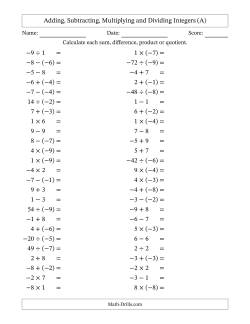
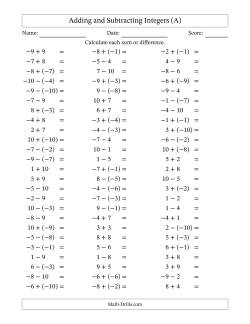

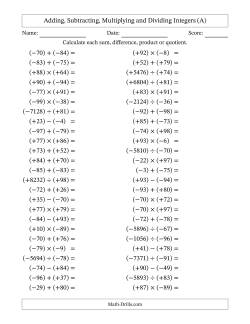

Integer Resources
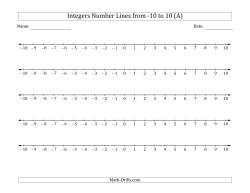
- Coordinate graph paper can be very useful when studying integers. Coordinate geometry is a practical application of integers and can give students practice with using integers while learning another related skill. Coordinate graph paper can be found on the Graph Paper page:
- Coordinate Graph Paper
- Integer number lines can be used for various math activities including operations with integers, counting, comparing, ordering, etc.
- Integer Number Lines
Comparing and Ordering Integers
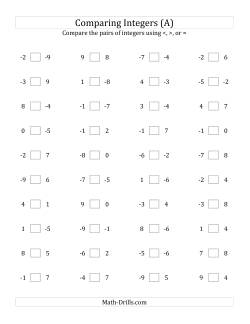
- For students who are just starting with integers, it is very helpful if they can use an integer number line to compare integers and to see how the placement of integers works. They should quickly realize that negative numbers are counter-intuitive because they are probably quite used to larger absolute values meaning larger numbers. The reverse is the case, of course, with negative numbers. Students should be able to recognize easily that a positive number is always greater than a negative number and that between two negative integers, the one with the lesser absolute value is actually the greater number. Have students practice with these integers worksheets and follow up with the close proximity comparing integers worksheets.
- Comparing Integers Worksheets
Adding and Subtracting Integers
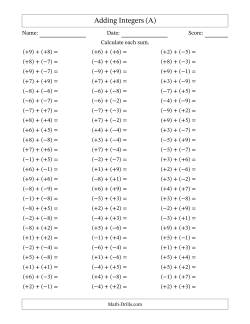
- Two-color counters are fantastic manipulatives for teaching and learning about integer addition. Two-color counters are usually plastic chips that come with yellow on one side and red on the other side. They might be available in other colors, so you'll have to substitute your own colors in the following description.
- Adding with two-color counters is actually quite easy. You model the first number with a pile of chips flipped to the correct side and you also model the second number with a pile of chips flipped to the correct side; then you mash them all together, take out the zeros (if any) and behold, you have your answer! Need further elaboration? Read on!
- The correct side means using red to model negative numbers and yellow to model positive numbers. You would model —5 with five red chips and 7 with seven yellow chips. Mashing them together should be straight forward although, you'll want to caution your students to be less exuberant than usual, so none of the chips get flipped. Taking out the zeros means removing as many pairs of yellow and red chips as you can. You can do this because —1 and 1 when added together equals zero (this is called the zero principle). If you remove the zeros, you don't affect the answer. The benefit of removing the zeros, however, is that you always end up with only one color and as a consequence, the answer to the integer question. If you have no chips left at the end, the answer is zero!
- Adding Integers Worksheets with 75 Questions Per Page (Some Parentheses)













